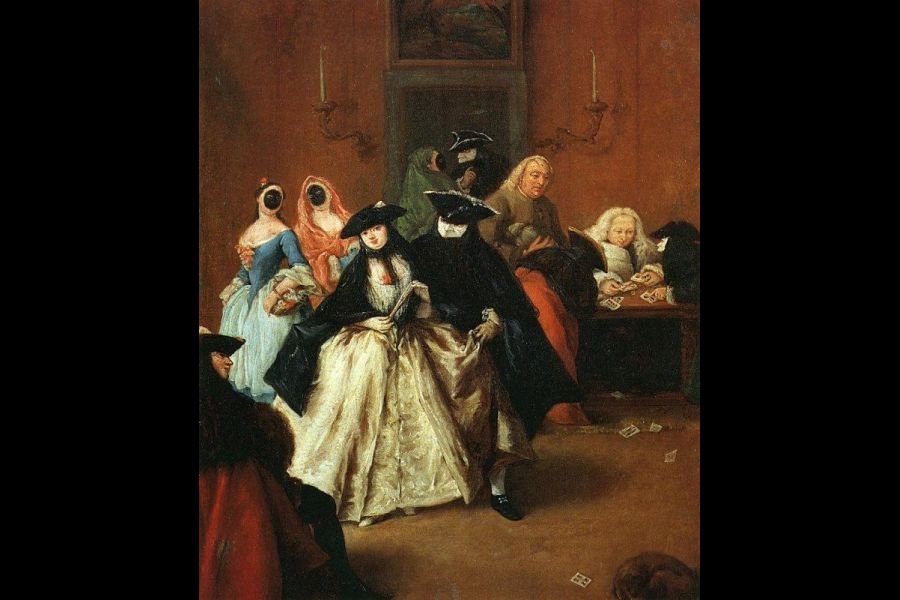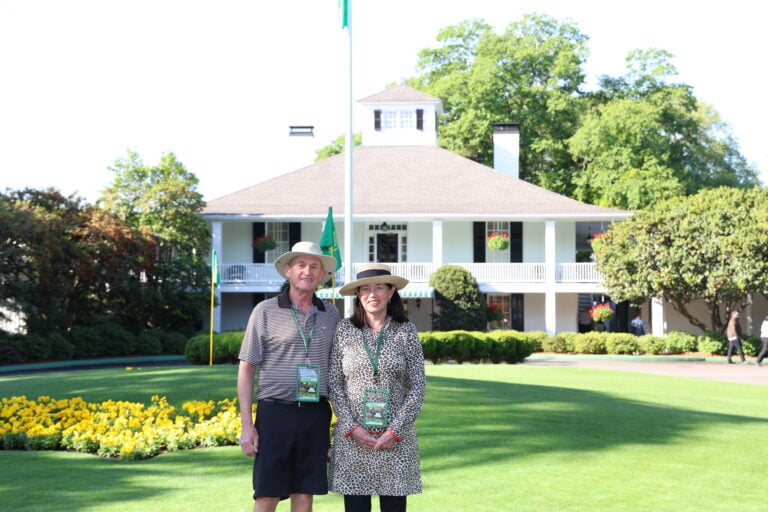To mask or not to mask continues to be a contentious gamble in our time.
In 18th century Venice, the mask did not have to be mandated, it was enthusiastically supported. For six months of the year during Carnival, the indispensable masks were worn by everyone in the city – rich and poor, magistrates and prostitutes, shopkeepers and priests, beggars and dignitaries, even masked mothers nursing masked infants. Only money changers were exempt from the tradition. There were masked parties, masked balls and masked processions through the streets. Masks remain essential to the Venice Carnival to this day.
From its beginning in 1162, to celebrate a military victory, the festival grew to become official during the Renaissance and famous by the 18th Century when it lasted from early October to Shrove Tuesday in February or March. Carnival was theatre and music, puppet shows, ropewalkers, buskers, fortune tellers, fireworks and exotic animals, all a diversion from the reality of a once powerful city-state in decline. The pleasures were addictive. There were affairs and betrayals, a mingling of classes and strangers normally forbidden and an obsession with gambling. Dice and cards were played everywhere, in shops, taverns, on bridges and in gondolas. Patricians gambled in grand houses and in the houses of courtesans. In 1638, the Venetian state financed the Ridotto, the first legal public gaming house and the prototype for the casinos of Europe. Better to control and profit from what could not be prevented. To the Venetians, for a man to risk nothing was a man worth nothing. The Venetian gentleman was expected to suffer loss or gain or bankruptcy with a demeanour of indifference.
Pietro Longhi (1701-1785), was a Venetian artist with a keen eye and precise brush for everyday life depicted in small easel paintings favoured by patrician collectors. These “genre” works reflected the shift of interest from spiritual to secular art subjects among patrons. Longhi portrayed the daily activities, formalities and amusements of social life from the salons to the piazzas where rigid hierarchical social conventions were abandoned during Carnival season. In “Il Ridotto,” there is no obvious story to tell or lively activity apparent in the simple composition. The figures are detached, restrained, puppet-like, arranged as if on a theatre set. This Ridotto is a place of covert assignation, hushed whispers and silence, gambling and risk. The costumes are those of the Carnival, white and black masks, the tabarro cape and zendale hood that covers the head topped by the tricorne black hat. The men wear full face white Bauta masks, best for anonymity and only allowed to be worn by citizens. The central man presses in to lift the woman’s skirt. Her gaze is elsewhere as she toys with a fan. Her dress of silk brocade suggests wealth. She is likely a courtesan as she is unmasked. Three other women wear the patrician black moretta masks held in place by the teeth preventing speech. At the gambling table three men hunch over their cards, some strewn on the floor. A retainer holds a bag, money? In the lower left corner, a man watches the couple. Spies are everywhere in Venice. Behind the spectacle and display lies a hidden world of secrets and conspiracies.
See “La Serenissima” — Venice in Art and History with art historian Penny-Lynn Cookson, Thursdays from Feb. 17 to March 24 on Zoom, from RiverBrink Art Museum, Queenston.










